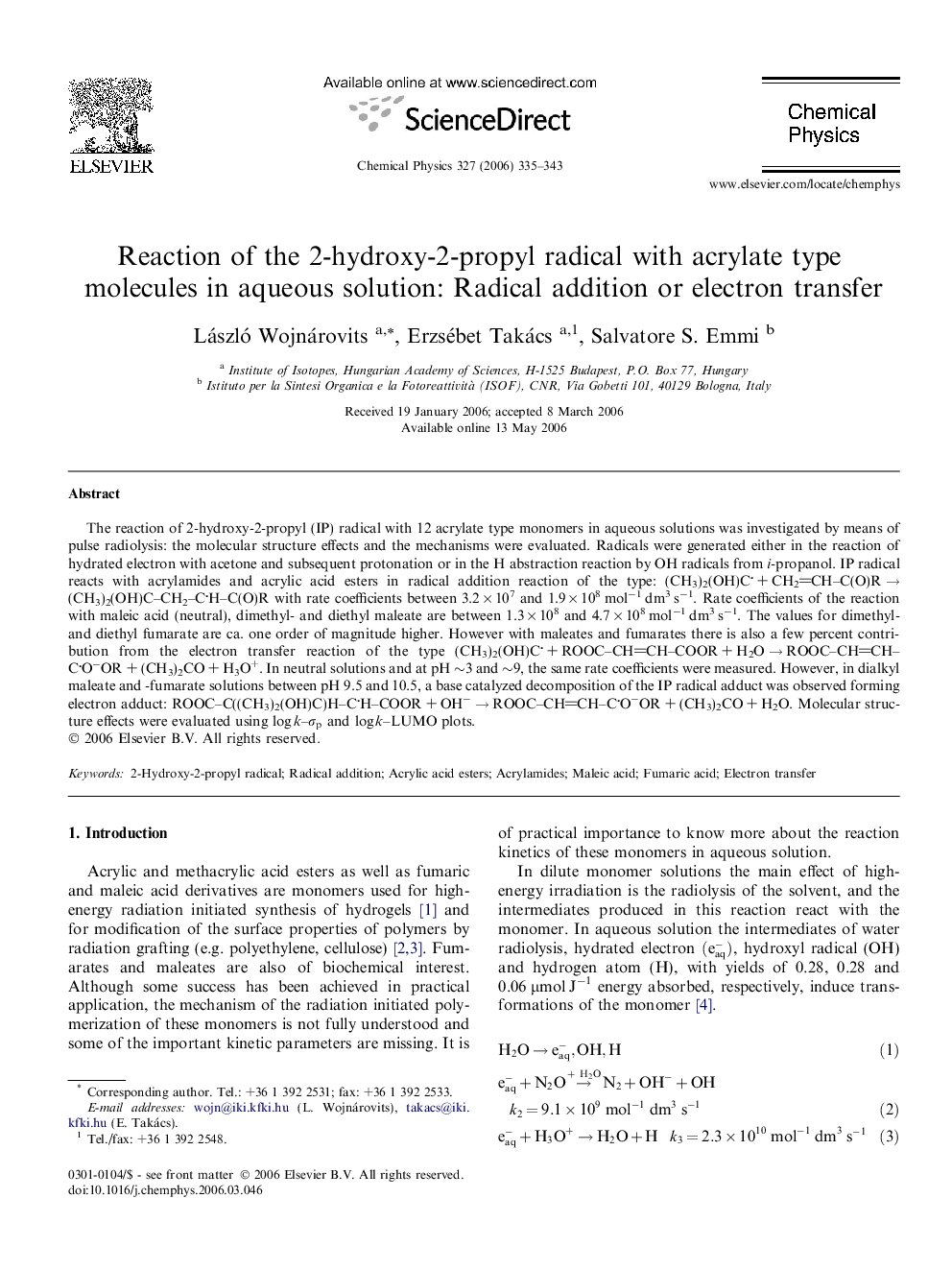| Article ID | Journal | Published Year | Pages | File Type |
|---|---|---|---|---|
| 5376755 | Chemical Physics | 2006 | 9 Pages |
Abstract
The reaction of 2-hydroxy-2-propyl (IP) radical with 12 acrylate type monomers in aqueous solutions was investigated by means of pulse radiolysis: the molecular structure effects and the mechanisms were evaluated. Radicals were generated either in the reaction of hydrated electron with acetone and subsequent protonation or in the H abstraction reaction by OH radicals from i-propanol. IP radical reacts with acrylamides and acrylic acid esters in radical addition reaction of the type: (CH3)2(OH)C + CH2CH-C(O)R â (CH3)2(OH)C-CH2-CH-C(O)R with rate coefficients between 3.2 Ã 107 and 1.9 Ã 108 molâ1 dm3 sâ1. Rate coefficients of the reaction with maleic acid (neutral), dimethyl- and diethyl maleate are between 1.3 Ã 108 and 4.7 Ã 108 molâ1 dm3 sâ1. The values for dimethyl- and diethyl fumarate are ca. one order of magnitude higher. However with maleates and fumarates there is also a few percent contribution from the electron transfer reaction of the type (CH3)2(OH)C + ROOC-CHCH-COOR + H2O â ROOC-CHCH-COâOR + (CH3)2CO + H3O+. In neutral solutions and at pH â¼3 and â¼9, the same rate coefficients were measured. However, in dialkyl maleate and -fumarate solutions between pH 9.5 and 10.5, a base catalyzed decomposition of the IP radical adduct was observed forming electron adduct: ROOC-C((CH3)2(OH)C)H-CH-COOR + OHâ â ROOC-CHCH-COâOR + (CH3)2CO + H2O. Molecular structure effects were evaluated using log k-Ïp and log k-LUMO plots.
Related Topics
Physical Sciences and Engineering
Chemistry
Physical and Theoretical Chemistry
Authors
László Wojnárovits, Erzsébet Takács, Salvatore S. Emmi,
